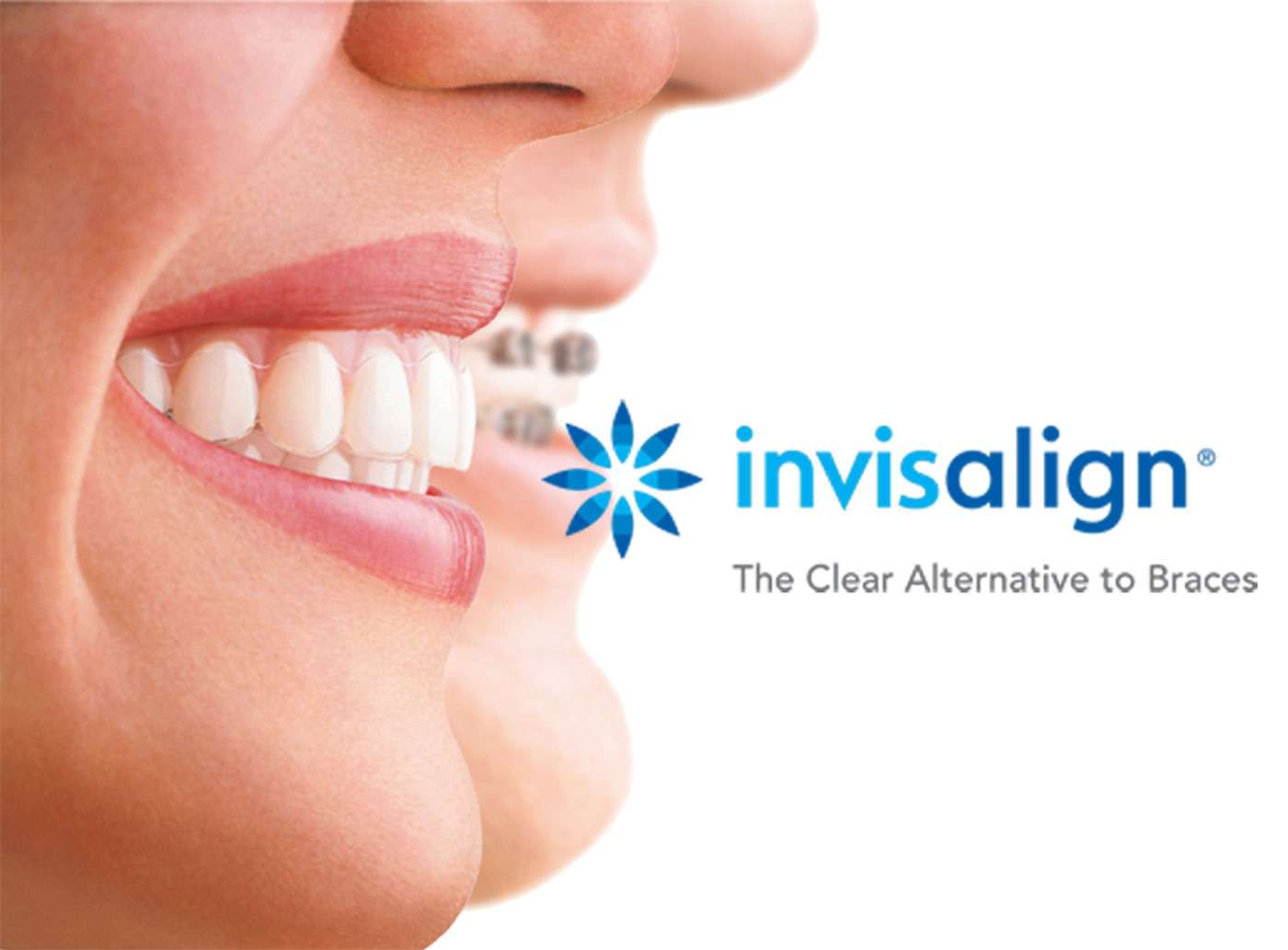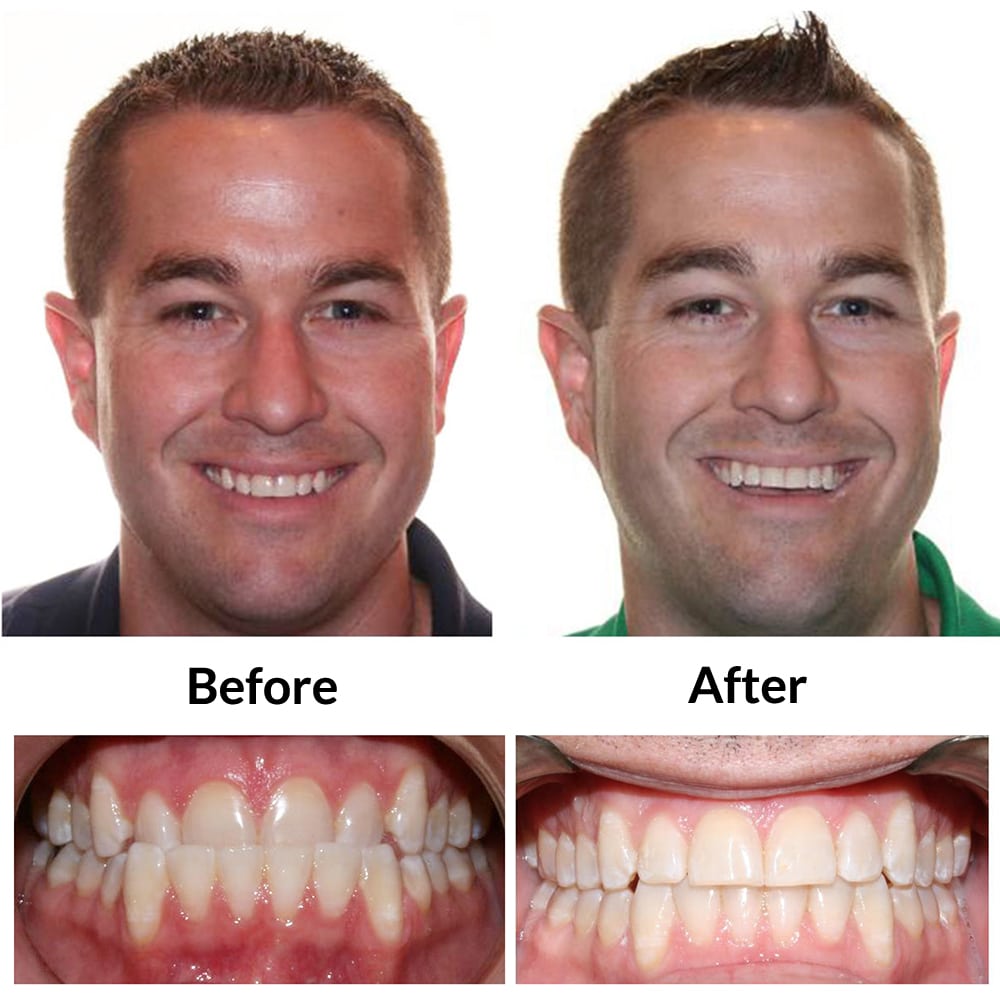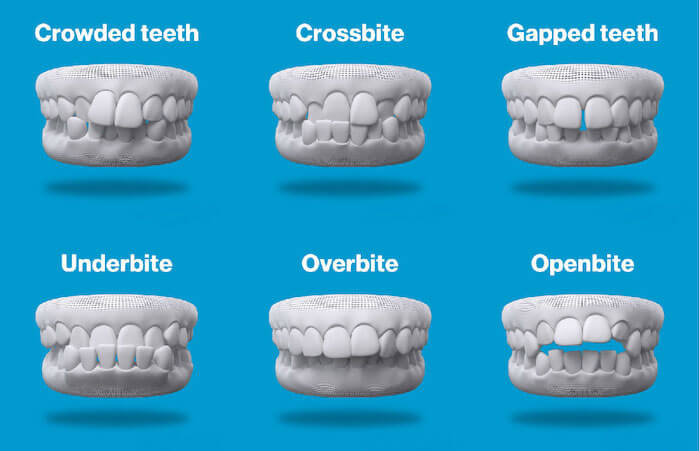Invisalign for Teens: A Modern Solution to Straightening Young Smiles
Invisalign for Teens: A Modern Solution to Straightening Young Smiles
Blog Article
Invisalign vs. Typical Braces: Which Choice Is Right for You?
When thinking about orthodontic therapy, the option in between Invisalign and standard braces provides several crucial factors that merit cautious analysis. Invisalign offers a discreet option with detachable aligners, while typical braces offer a much more noticeable yet effective service for serious imbalance.
Review of Therapy Options

In comparison, conventional dental braces include metal braces and cords that are bonded to the teeth. This technique uses continuous pressure with time to achieve positioning. While reliable for complicated orthodontic concerns, conventional braces need normal visits for changes and can present challenges in preserving dental health because of the trouble of cleansing around braces and cords.
Both alternatives have their advantages, and the selection typically depends upon certain dental problems, lifestyle choices, and client conformity. Ultimately, speaking with an orthodontic expert is essential for establishing the most suitable treatment strategy tailored to private requirements. Understanding the nuances of each option can dramatically affect the overall success of orthodontic treatment.
Aesthetic Factors To Consider
A considerable factor influencing the selection in between Invisalign and standard braces is the visual charm each treatment supplies. Invisalign aligners are crafted from clear plastic, making them essentially undetectable when used.
On the other hand, conventional braces contain metal braces and cables, which can be extra obvious. While developments in orthodontic technology have actually resulted in the growth of smaller brackets and tinted elastics, traditional dental braces still keep an even more obvious profile. For some people, the presence of braces may deter them from seeking needed therapy.
Inevitably, the selection in between Invisalign and traditional dental braces might depend upon personal choices relating to looks. People who prioritize discernment typically favor Invisalign, while those that are much less worried concerning presence may go with conventional braces. Comprehending the aesthetic implications of each alternative is crucial for making an informed decision that aligns with one's lifestyle and preferences.
Comfort and Convenience

In regards to benefit, Invisalign aligners are detachable, making it possible for people to enjoy their favorite foods without limitation and keep optimum dental health. Cleaning and flossing are streamlined, as the aligners can be secured throughout these routines, whereas traditional braces require mindful steering around braces and additional resources cords.
Additionally, Invisalign's progressive system permits less orthodontic check outs. Individuals generally receive multiple collections of aligners simultaneously, which can enhance the treatment process and minimize time spent in the orthodontist's chair. In contrast, conventional dental braces demand routine adjustments, making them less practical for those with busy routines. Invisalign. On the whole, the convenience and comfort of Invisalign make it an attractive selection for lots of people seeking orthodontic therapy.
Treatment Period and Efficiency
While both Invisalign and traditional braces are effective in remedying dental imbalances, the duration of therapy can anchor differ dramatically between both choices. Normally, Invisalign treatment can take anywhere from 12 to 18 months, relying on the intricacy of the situation. The clear aligners function by slowly shifting teeth right into their preferred placements, and routine follow-ups with an orthodontist help make sure progress stays on the right track.
In contrast, standard dental braces frequently need a longer dedication, usually varying from 18 months to three years. This is because of their set nature and using brackets and cables, which can be much more efficient for complex instances and severe misalignments (Invisalign). The treatment efficiency of typical dental braces is well-documented, as they enable precise adjustments and greater control over tooth movement
Ultimately, the option between Invisalign and typical dental braces may depend upon both the expected treatment duration and the particular oral issues at hand. Consulting with an orthodontist is critical, as they can give customized referrals based upon private demands, guaranteeing the chosen method straightens with wanted end results and durations.
Expense Comparison and Insurance Coverage Choices
Cost plays a significant duty in the decision-making procedure for people taking into consideration orthodontic treatment, whether choosing Invisalign or typical dental braces. Typically, the expense of Invisalign ranges from $3,000 to $8,000, while typical dental braces commonly set you back between $2,000 and $6,000. Factors affecting these expenses consist of the intricacy of the case, the period of treatment, and geographical area.
Insurance policy protection can significantly influence out-of-pocket costs. Many oral insurance strategies offer partial coverage for orthodontic therapies, but the specifics can differ commonly. It is essential for individuals to review their insurance coverage to determine the degree of coverage for either choice. Usually, standard dental read the article braces may be extra frequently covered by insurance policy plans contrasted to Invisalign, which some insurance firms categorize as an aesthetic treatment.
Furthermore, a number of orthodontic practices use adaptable payment plans, making both therapy alternatives more obtainable. Patients ought to make inquiries about potential financing choices and discount rates for ahead of time settlements. Reviewing the total cost, including insurance benefits and layaway plan, is crucial for making an informed choice that straightens with both visual choices and budget considerations.

Conclusion
In recap, the selection between Invisalign and traditional dental braces depends upon numerous aspects, including visual preferences, comfort, therapy duration, and expense. Invisalign offers a very discreet, removable choice that facilitates dental hygiene and nutritional versatility, while traditional dental braces might be better for intricate oral problems and often come with a lower rate point. Inevitably, assessment with an orthodontist is crucial to evaluate specific circumstances and figure out one of the most suitable therapy alternative for achieving ideal oral alignment.
When thinking about orthodontic therapy, the option between Invisalign and conventional dental braces provides numerous essential variables that merit mindful evaluation.Comparing Invisalign and typical braces discloses distinctive treatment choices for orthodontic correction.While both Invisalign and conventional dental braces are effective in fixing oral imbalances, the period of treatment can vary substantially in between the 2 options.Cost plays a significant function in the decision-making procedure for people considering orthodontic treatment, whether opting for Invisalign or standard dental braces.In recap, the option in between Invisalign and standard braces hinges on several elements, including aesthetic choices, convenience, treatment duration, and cost.
Report this page